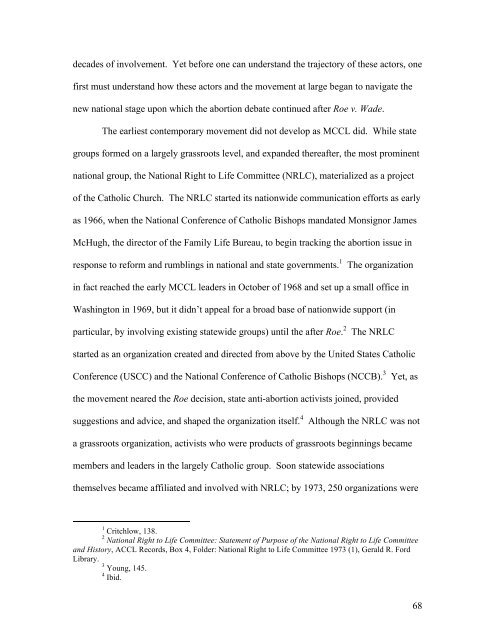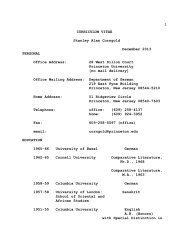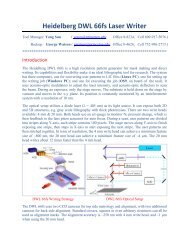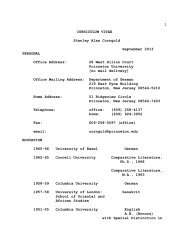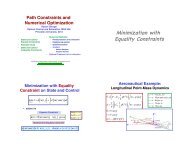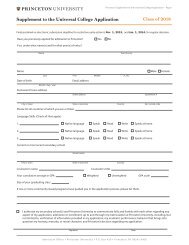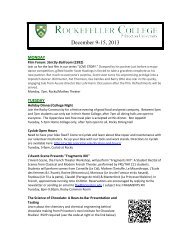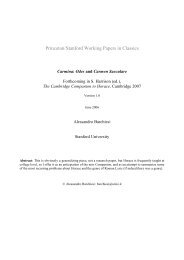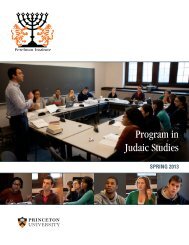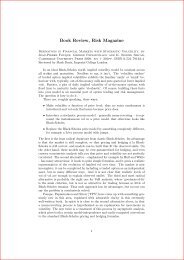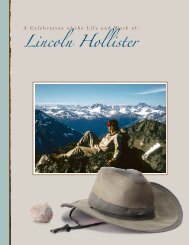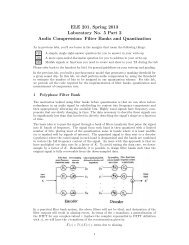The Pre-Roe Pro-Life Movement in Minnesota and New York
The Pre-Roe Pro-Life Movement in Minnesota and New York
The Pre-Roe Pro-Life Movement in Minnesota and New York
You also want an ePaper? Increase the reach of your titles
YUMPU automatically turns print PDFs into web optimized ePapers that Google loves.
decades of <strong>in</strong>volvement. Yet before one can underst<strong>and</strong> the trajectory of these actors, one<br />
first must underst<strong>and</strong> how these actors <strong>and</strong> the movement at large began to navigate the<br />
new national stage upon which the abortion debate cont<strong>in</strong>ued after <strong>Roe</strong> v. Wade.<br />
<strong>The</strong> earliest contemporary movement did not develop as MCCL did. While state<br />
groups formed on a largely grassroots level, <strong>and</strong> exp<strong>and</strong>ed thereafter, the most prom<strong>in</strong>ent<br />
national group, the National Right to <strong>Life</strong> Committee (NRLC), materialized as a project<br />
of the Catholic Church. <strong>The</strong> NRLC started its nationwide communication efforts as early<br />
as 1966, when the National Conference of Catholic Bishops m<strong>and</strong>ated Monsignor James<br />
McHugh, the director of the Family <strong>Life</strong> Bureau, to beg<strong>in</strong> track<strong>in</strong>g the abortion issue <strong>in</strong><br />
response to reform <strong>and</strong> rumbl<strong>in</strong>gs <strong>in</strong> national <strong>and</strong> state governments. 1<br />
<strong>The</strong> organization<br />
<strong>in</strong> fact reached the early MCCL leaders <strong>in</strong> October of 1968 <strong>and</strong> set up a small office <strong>in</strong><br />
Wash<strong>in</strong>gton <strong>in</strong> 1969, but it didn’t appeal for a broad base of nationwide support (<strong>in</strong><br />
particular, by <strong>in</strong>volv<strong>in</strong>g exist<strong>in</strong>g statewide groups) until the after <strong>Roe</strong>. 2<br />
<strong>The</strong> NRLC<br />
started as an organization created <strong>and</strong> directed from above by the United States Catholic<br />
Conference (USCC) <strong>and</strong> the National Conference of Catholic Bishops (NCCB). 3<br />
Yet, as<br />
the movement neared the <strong>Roe</strong> decision, state anti-abortion activists jo<strong>in</strong>ed, provided<br />
suggestions <strong>and</strong> advice, <strong>and</strong> shaped the organization itself. 4 Although the NRLC was not<br />
a grassroots organization, activists who were products of grassroots beg<strong>in</strong>n<strong>in</strong>gs became<br />
members <strong>and</strong> leaders <strong>in</strong> the largely Catholic group. Soon statewide associations<br />
themselves became affiliated <strong>and</strong> <strong>in</strong>volved with NRLC; by 1973, 250 organizations were<br />
1 Critchlow, 138.<br />
2 National Right to <strong>Life</strong> Committee: Statement of Purpose of the National Right to <strong>Life</strong> Committee<br />
<strong>and</strong> History, ACCL Records, Box 4, Folder: National Right to <strong>Life</strong> Committee 1973 (1), Gerald R. Ford<br />
Library.<br />
3 Young, 145.<br />
4 Ibid.<br />
68


